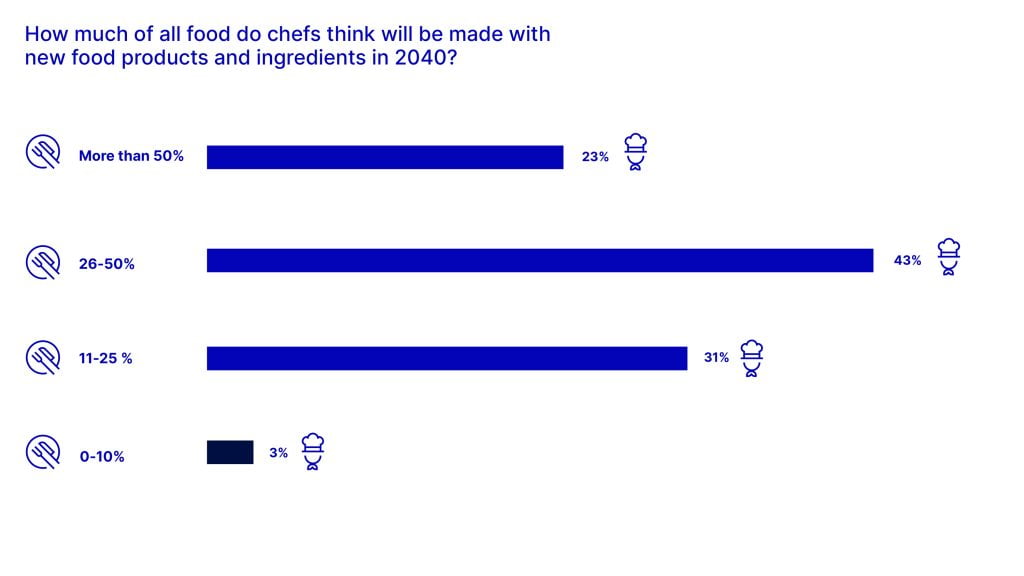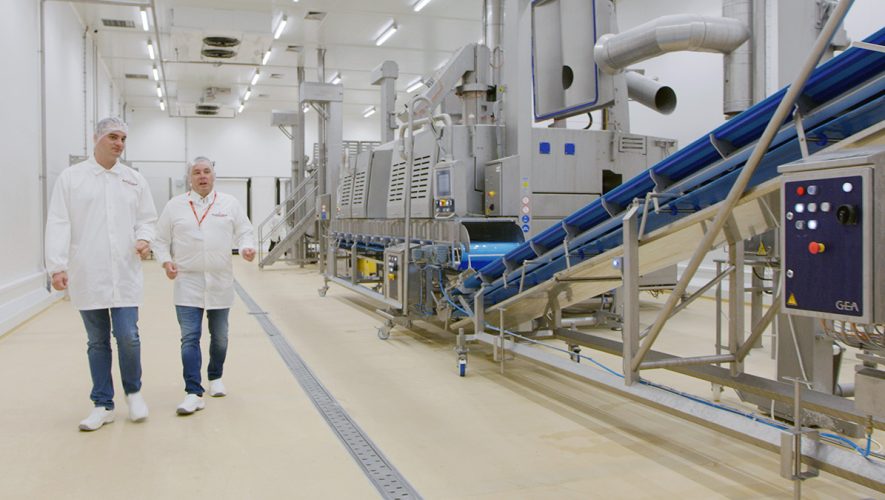- 23% of the chefs surveyed even expect that more than half of food will be produced using alternative protein sources by 2040
- 90% have observed a growing interest in alternatives to conventional meat and milk-based products, with over 40% reporting a high degree of increased demand
- Demand for plant-based proteins will reach its highest level in the next ten years
At least a quarter of all food could be produced from alternative proteins by 2040. This was one of the findings of a GEA-commissioned survey of 1,000 chefs in eleven countries, which the machinery and plant manufacturer presented today in Frankfurt. Of the chefs surveyed, 43 percent believe that the proportion of all meals prepared with alternative proteins will reach between 26 and 50 percent by 2040. Nearly one in four of the respondents expects alternative proteins to constitute more than 50 percent of all food by 2040. These more sustainable alternatives to meat, dairy, seafood and eggs are derived from plants or produced through microbes or cell cultivation.

CEO Lindberg International

GEA-CEO
Conducted by Danish market research agency Lindberg International in August 2022, the survey also shows that chefs have already begun the transition to new foods. Roughly 90 percent said they are already using meat and dairy alternatives, with a good one in three even using them to a significant extent.
“Alternative proteins hold the promise of helping feed a growing population using fewer resources. As such, they can play an essential role in making our food system more sustainable and reliable,” explains GEA CEO Stefan Klebert. “GEA enables the technological development and commercial production of alternative proteins. This puts us at the center of a defining moment that will very likely shape the future of nutrition.”
“This survey of chefs was very appealing to us as market researchers and we are delighted to have been able to connect with this exciting target group on three continents,” adds Michael Lindberg, CEO of Lindberg International. “Our survey findings show that chefs across the globe are very open to alternative proteins. Many are also conscious of the fact that these novel products and ingredients could have a pivotal impact on our future nutrition and want to actively promote this shift.”
Alternative foods increasingly in demand from restaurant goers
Around 90 percent of chefs have observed growing interest in alternatives to conventional products, with over 40 percent reporting a high degree of increased demand. According to the survey respondents, environmental (79 percent), health (74 percent) and ethical reasons (50 percent), such as the desire for higher animal welfare, are driving this trend.
Nearly 95 percent of those surveyed feel that their restaurant patrons will demand more plant-based proteins over the next decade, with one in two chefs expecting a high level of interest. For cultivated and cell-based proteins, 45 percent of chefs predict strong growth in demand. In addition, no less than 36 percent of chefs expect to see a considerable rise in customer demand for insect-based proteins and foods.
The chefs confirmed that, in many cases, plant-based products are now also a compelling alternative from a quality and price perspective. However, around 70 percent of chefs consider quality improvements crucial to the further success of novel alternatives going forward.

Technology accelerates path to New Food Frontiers
The chef survey forms part of GEA’s New Food Frontiers report, which examines the potential of new foods to provide food security for the world’s growing population. A widespread shift to alternative proteins not only has the potential to meet the food needs of future generations, but could also help solve global challenges – from the availability of staple foods and antibiotic resistance to climate change and sustainable economic development.
For GEA, the subject of food security is closely tied to its purpose “Engineering for a better world.” “New food is an ideal field for a company like GEA, which has longstanding experience in the food sector and proven technological expertise. This enables us to play a key role in shaping and promoting the development of this young industry – and to live up to our sustainability commitment,” says Stefan Klebert.
Survey methodology

In 2022, GEA partnered with market research agency Lindberg International to conduct the GEA Chef Survey on New Foods. Lindberg International conducted 1,002 online interviews in August 2022. Chefs from eleven nations were surveyed: Brazil, China, Denmark, Germany, India, Israel, the Netherlands, Singapore, South Korea, the UK and the USA.




